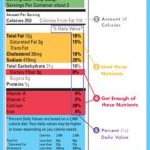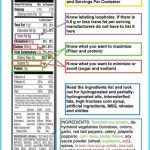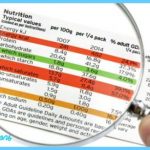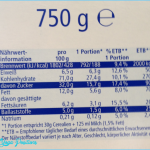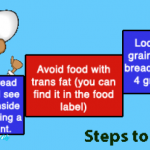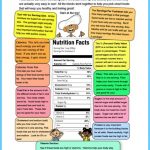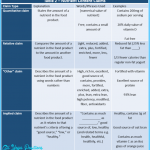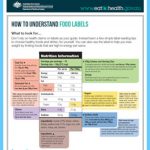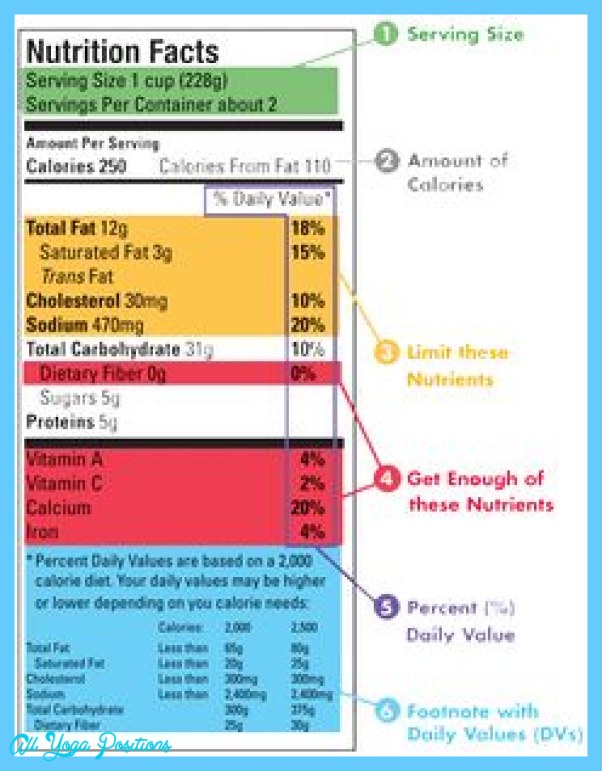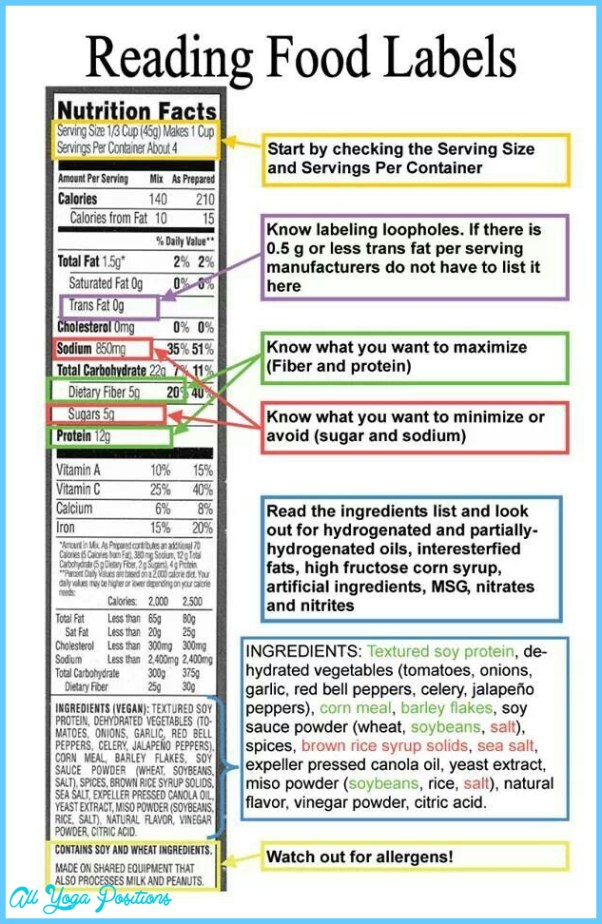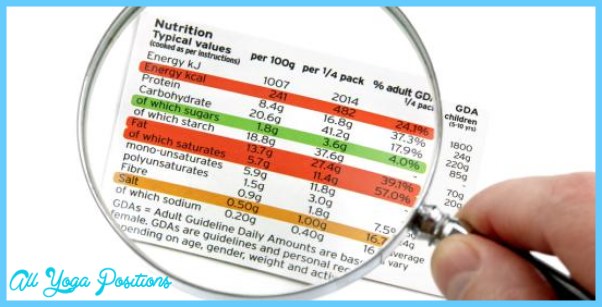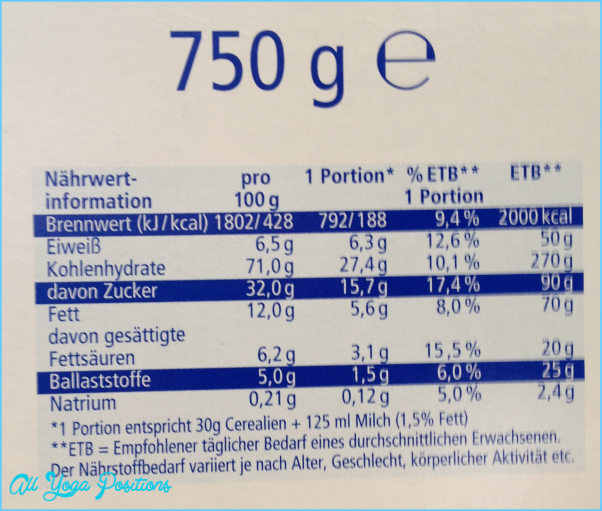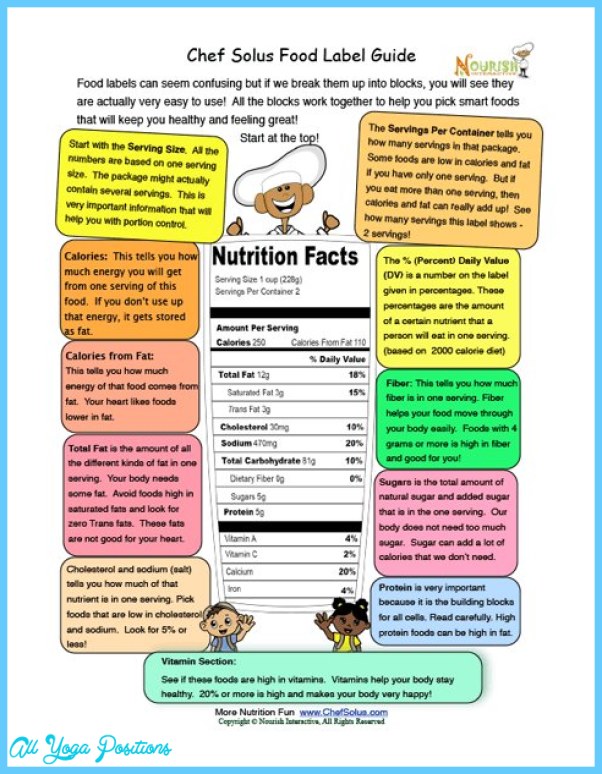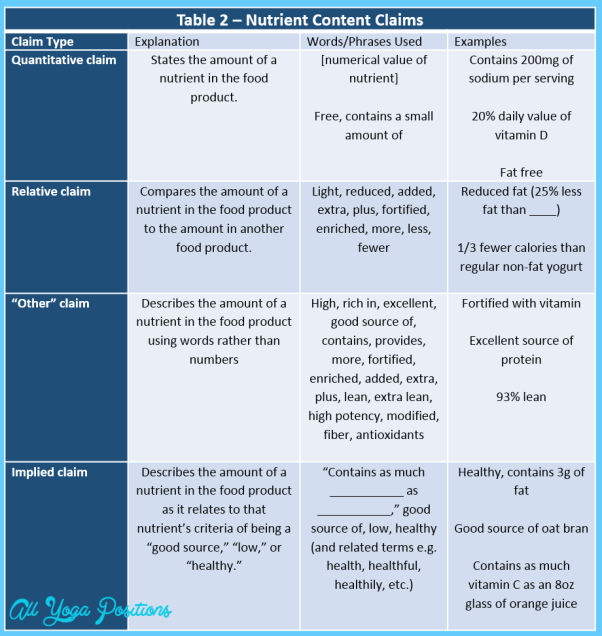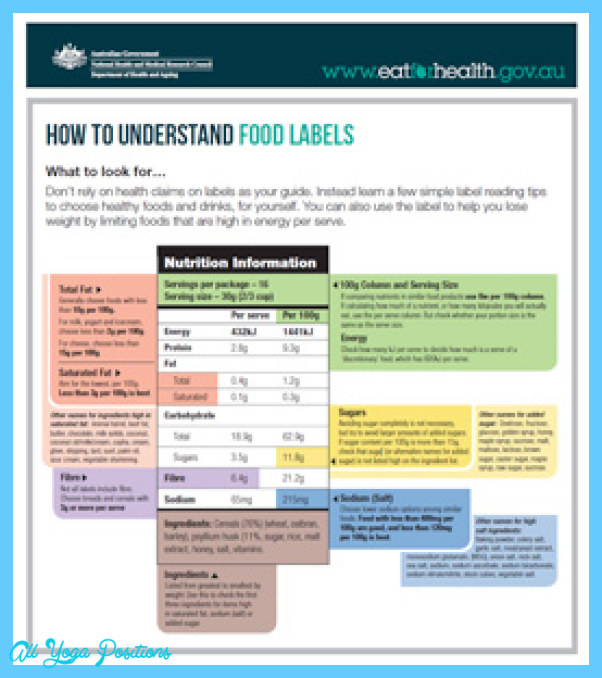Using Food Labels
The “Nutrition Facts” section of a food label is designed to help consumers make food choices based on the nutrients that are most important to good health. In addition to listing nutrient content by weight, the label puts the information in the context of a daily diet of 2000 calories that includes no more than 65 grams of fat (approximately 30% of total calories). For example, if a serving of a particular product has 13 grams of fat, the label will show that the serving represents 20% of the daily fat allowance. If your daily diet contains fewer or more than 2000 calories, you need to adjust these calculations accordingly.
Food labels use uniform serving sizes. This means that if you look at different brands of salad dressing, for example, you can compare calories and fat content based on the serving amount. (Food label serving sizes may be larger or smaller than USDA serving size equivalents, however.) Regulations also require that foods meet strict definitions if their packaging includes the terms light, low-fat, or high-fiber (see below). Health claims such as “good source of dietary fiber” or “low in saturated fat” on packages are signals that those products can wisely be included in your diet. Overall, the food label is an important tool to help you choose a diet that conforms to MyPlate and the Dietary Guidelines.
Using Food Labels Photo Gallery
• Low saturated fat. 1 gram or less of saturated fat per serving and no more than 15% of total calories.
• Cholesterol-free. Less than 2 mg of cholesterol and 2 gram or less of saturated fat per serving.
• Low cholesterol. 20 mg or less of cholesterol and 2 gram or less of saturated fat per serving.
• Low sodium. 140 mg or less of sodium per serving.
• Very low sodium. 35 mg or less of sodium per serving.
• Lean. Cooked seafood, meat, or poultry with less than 10 gram of fat, 4.5 gram or less of saturated fat, and less than 95 mg of cholesterol per serving.
• Extra lean Cooked seafood, meat, or poultry with less than 5 gram of fat, 2 gram of saturated fat, and 95 mg of cholesterol per serving.
NOTE: The FDA has not yet defined nutrient claims relating to carbohydrates, so foods labeled low- or reduced-carbohydrate do not conform to any approved standard.

